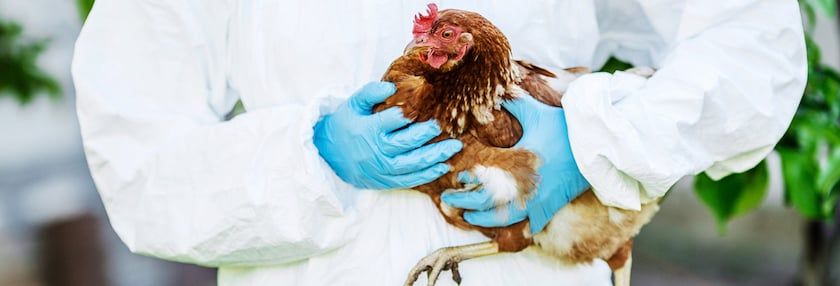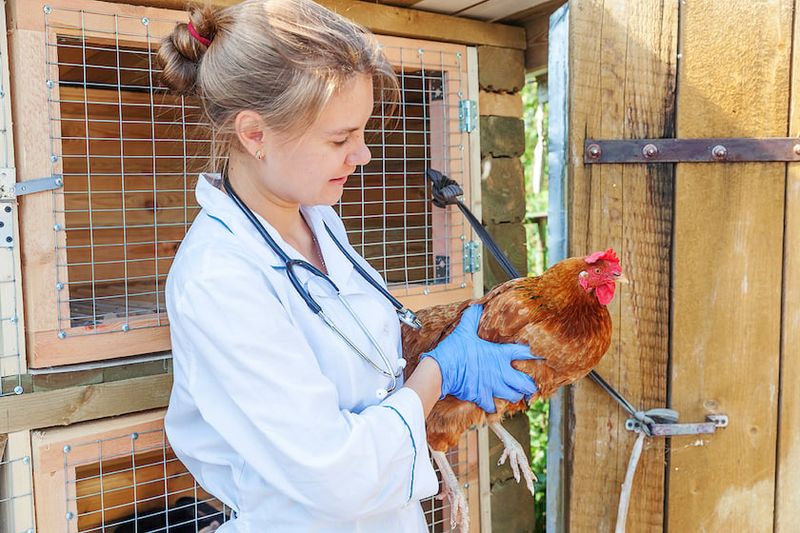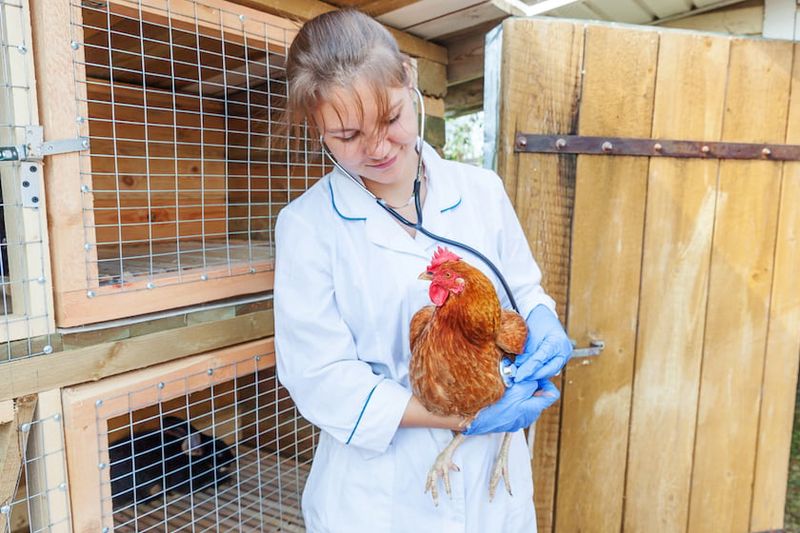First Aid for Chickens


Do you know what to do, and not to do?
You don’t have to be a chicken veterinarian to do some basic chicken first aid. For example, if something is bleeding you need to stop it from bleeding, right?
You can easily do the basics with a few pointers. However, if something is bleeding excessively or we’re dealing with broken bones, puncture wounds from dogs and cats or similar emergency-type situations, that’s when you need a veterinarian.
Be prepared and make sure you have found a veterinarian who treats poultry before the emergency happens.
Finding a veterinarian who treats poultry is not always easy—most veterinary schools in the U.S. offer limited (if any) training in chickens, but that may someday change due to increased demand.
Examine the whole bird
When you do use first aid, look at the entire bird. For example, if there is a laceration from a dog bite, make sure you don’t ignore the rest of the bird. Examine the entire bird by feeling for deformities and additional injuries.

Things to take notice of:
- The bird should hold its head high and even. “Wry neck” can be caused by local infections involving the middle ear and by trauma.
- The comb should be red, upright comb and free of scabs. If it’s not red the bird could be anemic or could have lost a significant amount of blood.
- The head should be free of swelling; swelling around the eyes can occur from sinus infections and trauma.
- The eyes should not be cloudy and should be free of discharge.
- The nostrils should be clear and free of any discharge, crust, and scratches
On to first aid:
So let’s say you did everything right but your chickens still get an ouchy.
First things first—if you have a chicken that is bleeding, remove it from the flock because chickens are naturally attracted to blood and they will peck at the bleeding chicken, often making the wound worse.
By having a small sick-pen you can at least house the bird there temporarily until the wound is healed (Chickens don’t like to live by themselves so long-term housing alone is not good either).
Begin with basic wound management. Clean and flush the wound to remove dirt with a 12cc or 20cc syringe. First flush with warm water and the wash and flush with either dilute soap or very dilute Betadine-style antiseptic (the Betadine makes the water turn brown and we are looking for a faint brown color). Betadine in high concentrations can be caustic to the skin of chickens.
As far as dressings on top of the wound you have two general paths: Dressing with a bandage, or no dressing and bandage. This really comes down to personal preference, meaning that you can typically get the same results either way.
For a dressing you can either use Silver Sulfadiazine (SSD) or Manuka honey. Both are considered bacteriostatic (they prevent the growth of additional bacteria).
If the injury is near the eyes, don’t use SSD since SSD can be harmful to the eyes. If you use the SSD or Manuka honey, make sure you put a bandage on it since both SSD and Manuka honey are sticky and will attract dirt. For a bandage, make sure you use a non-adhesive bandage and change daily, if possible.
For non-adhesive bandages, I prefer Tegaderm which you can purchase over the counter (OTC) at your local pharmacy. You can put some loosely wrapped vet wrap on after the Tegaderm. Alternatively, clean the wound two or three times a day and keep the wound area as clean and dry as possible.
The issue I have with bandages and dressings in general is that you can end up messing with them so much, hens often stop laying because they are being overly stressed. So, from my perspective, unless it is absolutely necessary don’t use ointments and bandages.

If the chicken is irritating the wound there are the equivalent of e-collars (the “cone of shame” of cartoon fame) which you can find on-line. The chicken with the e-collar is usually not too happy wearing it, but such is life sometimes.
What about antibiotics?
When our backyard chickens are injured, our paternal instincts take over. We want to do everything possible to get them healthy. Unfortunately, people tend to go overboard beyond what is described above and start to use antibiotics inappropriately.
If the wound looks infected or if you are dealing with a puncture wound, antibiotics may be necessary. In general, most antibiotic therapy will be selected based on culture and sensitivity of a sample taken from the wound site. In some cases, veterinarians have an informed guess about what type of antibiotics work best.
For the DIYers out there, access to over-the-counter antibiotics has been drastically restricted over the last few years. This is due to the inappropriate use of antibiotics in food animals including chickens.
Specifically, recent FDA-Veterinary Feed Directive (VFD) rules have severely restricted access to antibiotics commonly sold by feed stores. Per the VFD, owners must now have a “relationship” with their veterinarian to get a prescription for antibiotics that are deemed medically important.
It is important to recognize why these rules are in place in food animals, including backyard chickens.
Specifically, in hens when any drug is administered, the ovary, follicles, and oviduct are exposed to the drug. Hence, there is potential for drug residues to be present in those tissues which play an integral role in table egg production. More specifically, the yolk and egg white can serve as “storage sites” for drug residues within the egg.
This is why it is important to only use drugs and withdrawal times that are FDA and approved.
In the United States, there are currently eight drugs approved by the FDA for use in laying hens (amprolium, bacitracin, erythromycin, hygromycin B, nystatin, tylosin, nitarsone, and proparacaine hydrochloride). Due to the recent revision of the VFD, all of the above listed drugs except for bacitracin and amprolium are not available over-the-counter.
If you think your chicken has an infection, you will now need to have an established veterinarian-client-patient relationship in order to get a prescription these 8 antibiotics.

Reach out
When you have questions, feel free to reach out to your friendly extension veterinarian or hopefully if you have a relationship with your regular veterinarian you can also bounce questions off them.
Basic first aid is not too complicated and you can certainly do it. However, remember to be preventative and astute so you can catch small issues before they become big issues.
Tags:Pitesky's Poultry

Chicken Whisperer is part of the Catalyst Communications Network publication family.












